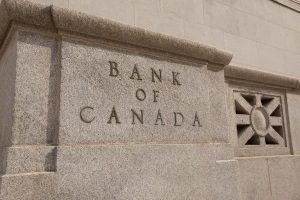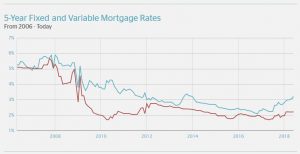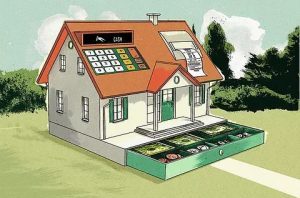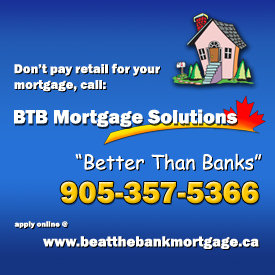
Before you buy a home there are a couple things you need to figure out first. One of the very first decisions you need to make is whether you want to work with a mortgage broker who is independent from the bank, or if you prefer, work with a financial representative from a specific bank. Next, you want to find a realtor that best understands your needs and wants.
From there, you and your realtor go through the laundry list of pros and cons as they relate to; type of neighborhood, type of building whether detached or attached, one, two, or three bedrooms, strata operated, resale potential, upgrades needed, local amenities, previous owners, the list goes on. Once you get an idea of the homes that tick the most boxes possible, writing an offer to purchase comes quick.
But what about your mortgage?
Unlike the list of requirements when it comes to someone’s potential home, a lot of people are only concerned about what the interest rate is when looking at their potential mortgage. If your price range was $500,000 for a 2 bedroom and you found one for $480,000, would you write an offer to buy without looking at those other requirements such as neighborhood, resale potential, upgrades needed, inspections, and previous owners?
There is a lot more that goes into a mortgage and understanding what differentiate one mortgage from another is very important for future borrowers to understand. The following are the 5 key elements borrowers need to be aware of before they sign and commit themselves to a lender and their mortgage product:
Privileges
Virtually every mortgage with every lender has some sort of privilege attached to it. A lot of the time it relates to pre-payment privileges. This can be extremely important because it allows you to increase your monthly payments, make lump sum payments, and change the frequency of your payments- all helping to pay down the principle portion of your mortgage and shave years off of unwanted interest. Why this is important to look at is because some lenders may only offer 10% pre-payment capabilities, while other’s 15%, and some 20%. With a $1,800 monthly payment that’s the difference between $180 against principle or $360. With an outstanding balance of $300,000 that’s the difference between a $30,000 lump sum payment against your principle or $60,000- a massive chunk that will take years and thousands of dollars more off your mortgage. Some lenders even offer the ability to skip a payment and double up on a payment.
Penalties
Nobody wants to pay a penalty for breaking their mortgage early (something 2/3 of people do in a 5-year fixed after the 2 year mark). That is why it is crucial for you to understand what your penalty will be IF you had to pay one. Some lenders use an IRD (Interest Rate Differential) penalty that takes into consideration term, outstanding balance, current rates, previous rates, and blends it all together into a formula. Other’s use three month’s interest and as you can probably guess, the IRD penalty is the more expensive one 99% of the time. IRD is usually applied to fixed term mortgages, variable rates more with three-month’s interest penalty. Big banks will almost always have a higher IRD penalty than monoline lenders because their formula accounts for posted rates, something usually much lower and offsetting with a monoline. A $12,000 IRD penalty with a big bank can be only $4,000 with a monoline for the same sized mortgage.
Interest Rate
The lower the rate, the lower than payment (assuming same amortization). What it really comes down to is picking the right term and choosing between fixed or variable, something a mortgage broker can be very helpful in explaining as it relates to your specific situation.
Portable Mortgage
This relates to a borrower’s ability to move their mortgage from one property, to another, even across provincial boarders. Some lenders like those big banks across Canada allow for this while it is harder when it comes to credit unions. If your job requires relocating and constant moving or travelling, this can be a very important factor.
Assumable Mortgage
Similar to portability, an assumable mortgage allows the person buying your home to take it over. This can result in avoiding pre-payment penalties or avoiding increased costs if downsizing. Not a feature commonly used but extremely beneficial when it is available, and you need it.
Connect with a Dominion Lending Centres BTB mortgage professional today to see which of these 5 topics most affects you and what lender offers the best solutions ! Visit our website www.betterthanbankmortgage.com or contact us here http://betterthanbankmortgage.com/about/contact/ .
Take our 30 sec quiz https://qualify.renewamortgage.ca/
STEP 1 – QUIZ
We’ll get to know you with our interactive tool to determine what type of loan and amount you qualify for. The initial process only takes 60 seconds!
Lightning Fast Service
Lightning Fast Service
STEP 2 – SOLUTION
Once we’ve determined how much you qualify for, we’ll discuss what program best fits your situation.
Our service is complimentary and is available to help you secure the best possible rates and payment options.
Quick Closing Process
STEP 3 – CLOSING
When you’re satisfied with the proposed plan, we’ll finalize your loan and help you get access to your much needed home or equity.
Michael Distefano
Mortgage Agent and Manager of operations
DLC BTB Mortgage Solutions FSCO 12039
Niagara largest Mortgage Broker
Email: miked@beatthebankmortgage.ca
Tel: 905-357-5366 Cell: 905-246-5363 Fax: 905-357-6654
Address 106-5017 Victoria Ave Niagara Falls, ON L2E4C9, Canada












